Internet Underground Music Archive in 1994
By early 1994, the Internet Underground Music Archive (IUMA) had migrated from Usenet and Gopher to the emerging internet platform, the World Wide Web. It was one of the first multimedia websites.
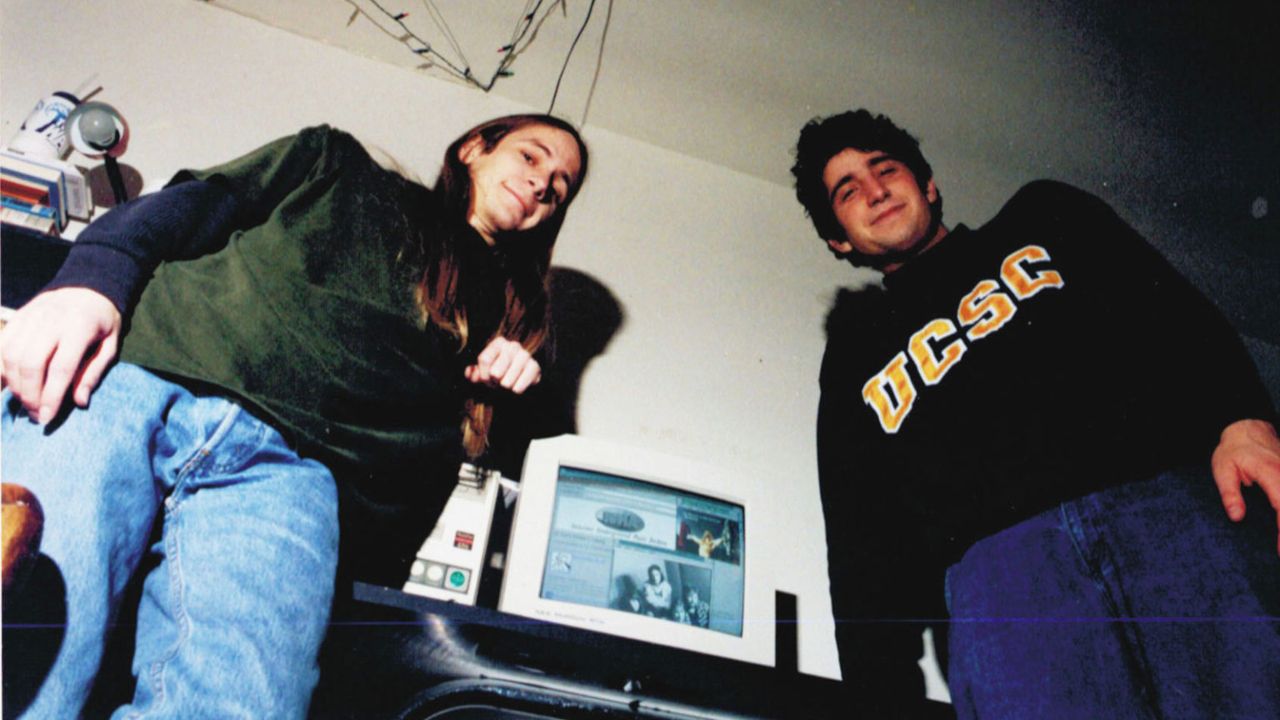
Although much of the interactive multimedia focus was on CD-ROMs during 1994, there were some multimedia experiments happening on the World Wide Web. Of particular note was a prototype online music service called the Internet Underground Music Archive (IUMA), which debuted on the Web around November 1993.
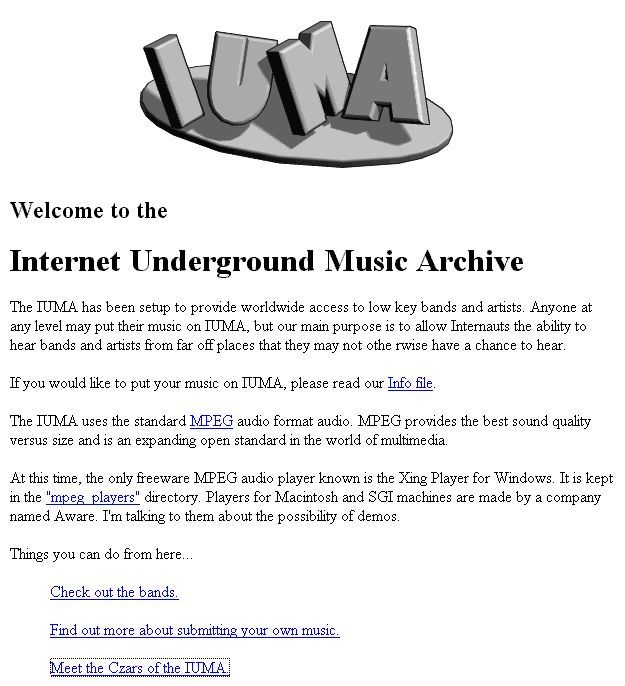
There were very few websites that went beyond text at the start of '94, so to begin with people didn't quite know what to make of IUMA. In a February 1994 profile by The Computer Paper magazine, IUMA was described as "the closest thing to a pirate radio station I've ever seen." The reporter continued:
"Like real pirate radio stations they give airplay to bands that would otherwise rarely get on the air. But the music they have in their library doesn't go on the radio, instead it's downloaded by users via the Internet."
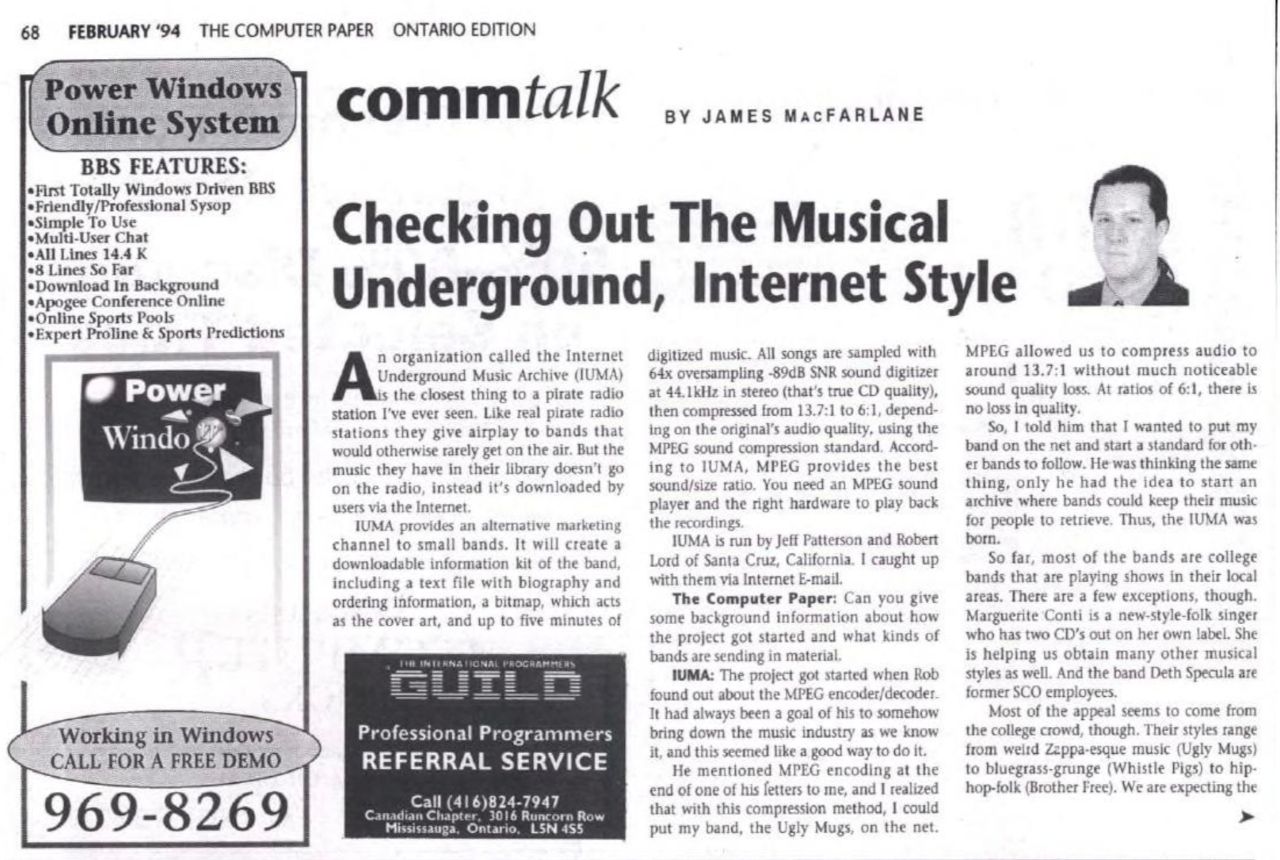
To further illustrate just how new and confusing the Web was at this point, later in the article IUMA founders Jeff Patterson and Rob Lord bragged that their site was about to receive a link from MTV:
"Also, in case you are interested, we will soon be linked to MTV.COM. Adam Curry, an MTV veejay, told us he wanted to link our site to his. So, when someone is using mosaic to peruse the net, there will be a place at MTV.COM where they can click and be transferred to IUMA."
IUMA (pronounced "I-yoo-MAH") was less than a year old at this time. Patterson and Lord, along with Jon Luini, had started the project in 1993 at the University of California in Santa Cruz. Initially, IUMA used FTP (File Transfer Protocol), Gopher and newsgroups — technologies that predated the Web — to enable people to view listings and download music files online. But, as noted, IUMA soon transitioned into a website.
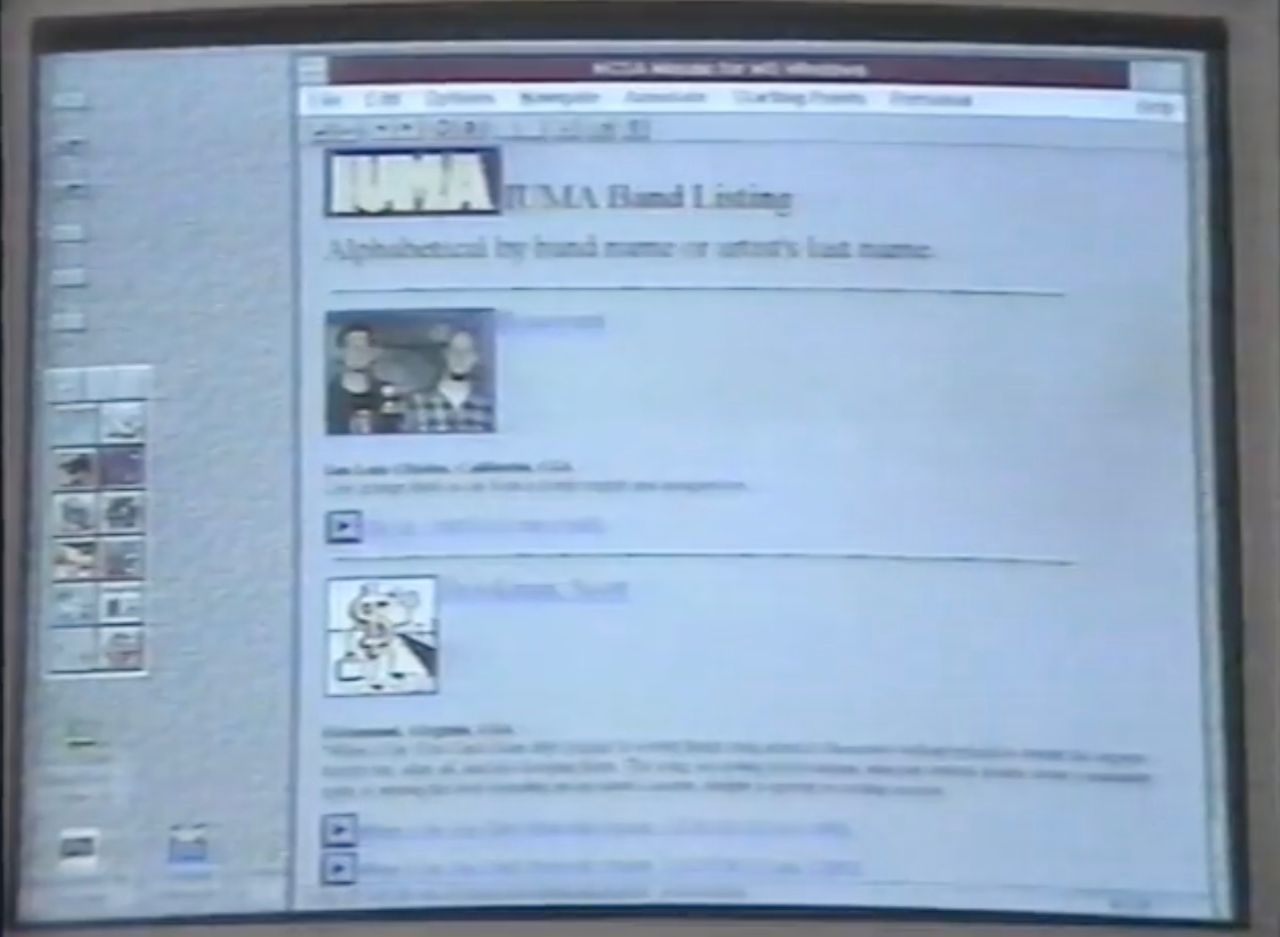
The idea behind IUMA was to help musicians who weren't signed by a major label. Like much of the early Web, it had an anti-establishment feel — one of its goals was to create a distribution alternative to record labels. Indie artists would send the IUMA team their music, which would be converted to a digital file and uploaded to the site.
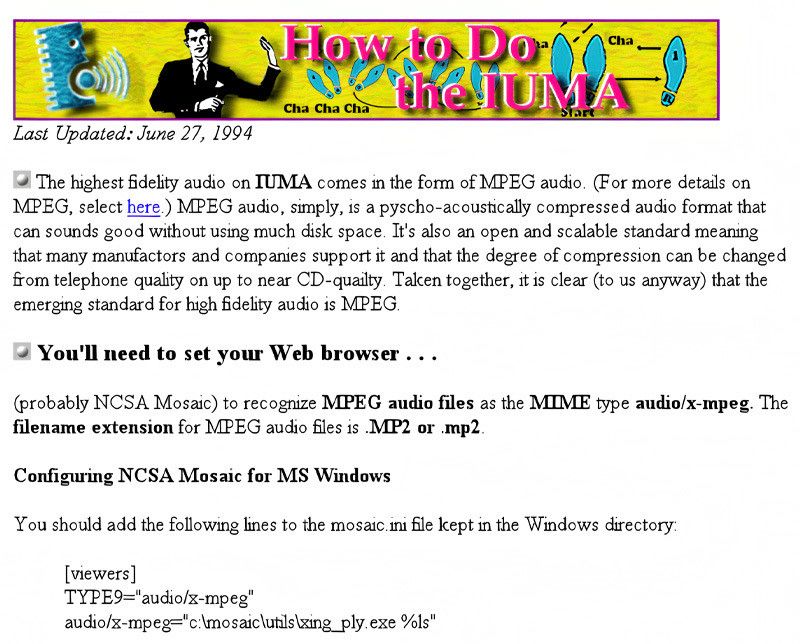
And yes, it was a manual upload process at this time, as explained in a May 1994 profile in Keyboard Magazine:
"Currently the only way to get your music on IUMA is to send a tape to them. Patterson and Lord make it very clear to musicians who use their service that they can only submit original material, and they don’t allow uploading of files. But MPEG encoding software is currently available for under $100."
Despite not being fully automated yet, IUMA was years ahead of its time. In 1994 there were a couple of major obstacles the Web had to overcome before music — or indeed any form of multimedia other than images — could reliably be transmitted over it.
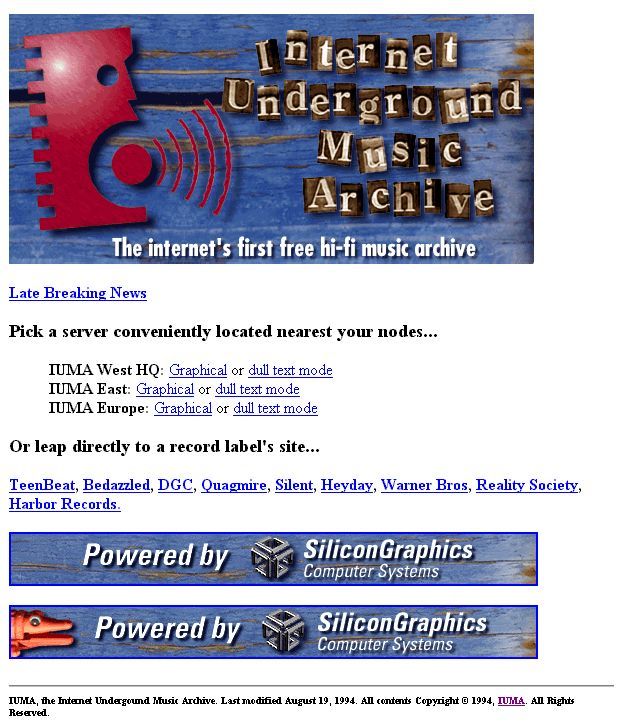
Dialing Up
The first problem was the limited download speeds and bandwidth of that era. Imagine visiting the IUMA website in mid-1994. First you have to turn on your computer, double-click the ISP icon on your desktop, and click a button to “dial-up” the Internet on your modem. Whiiiiirrrrr, weeeeeeeeeee, buuuurrrrrrrrrr [white noise]… After waiting (yes, waiting!) for thirty seconds or so, you’re connected. You then fire up Mosaic (the leading web browser at the time) and if you're lucky, you’re able to browse the Web at 14.4 Kbps — the maximum transfer speed of consumer modems back then. More likely, you’re traveling along at lower speeds due to congestion or other telephone line factors outside of your control.
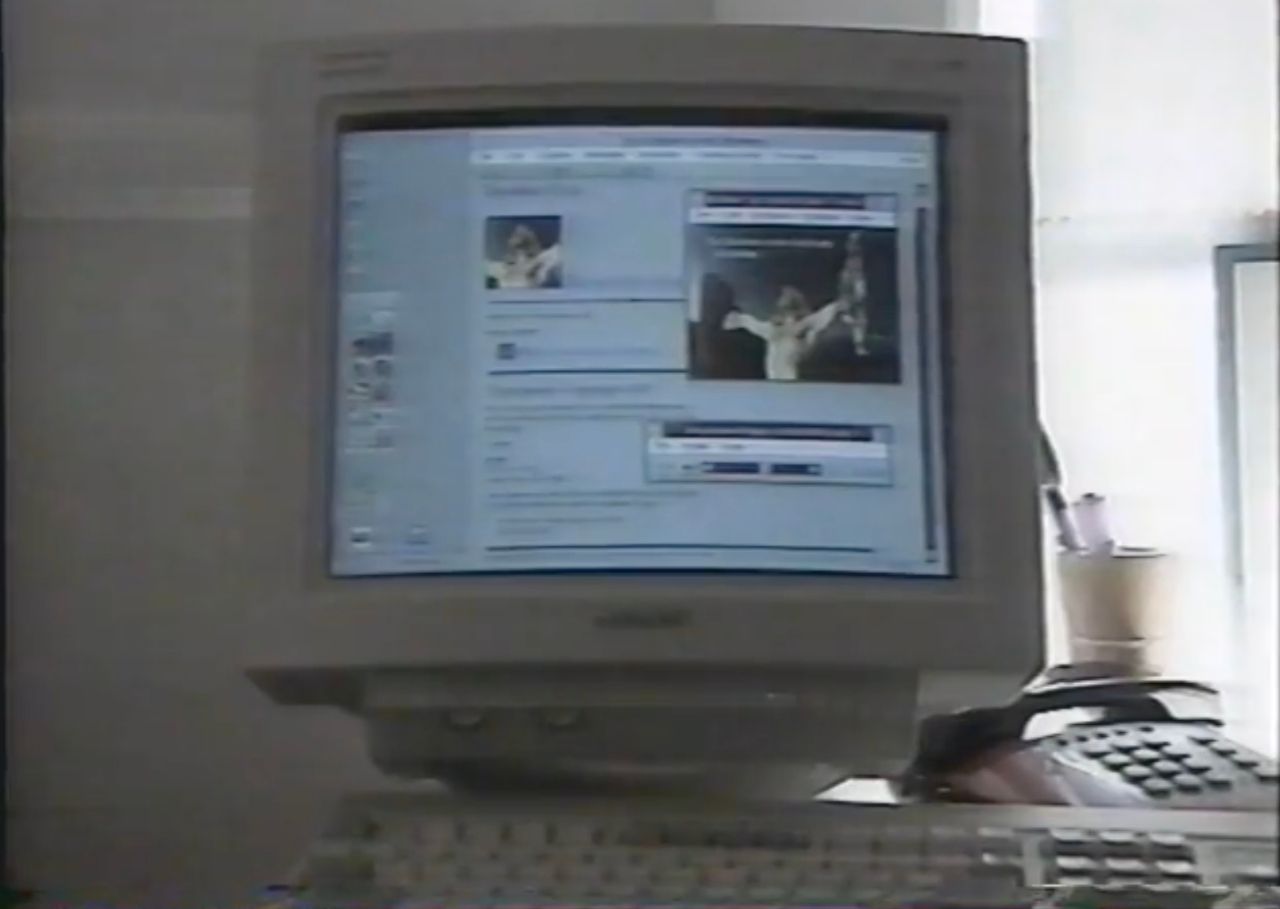
You type in the IUMA link (let’s say you’ve been told about it and made a note to check it out, since this is a time before search engines). A minute or so later the IUMA homepage slowly appears — one interminable graphic at a time — on your PC screen. You find a band to check out, say Ugly Mugs (Jeff Patterson's band), and select a song to download. It’s a 2MB mp2 file, so to download this on a 14.4 Kbps connection could take 20 minutes or more. A progress bar pops up on your screen to show the download. Bit by bit the progress bar fills up, going from left to right. Eventually, the download completes and you can listen to the music file.
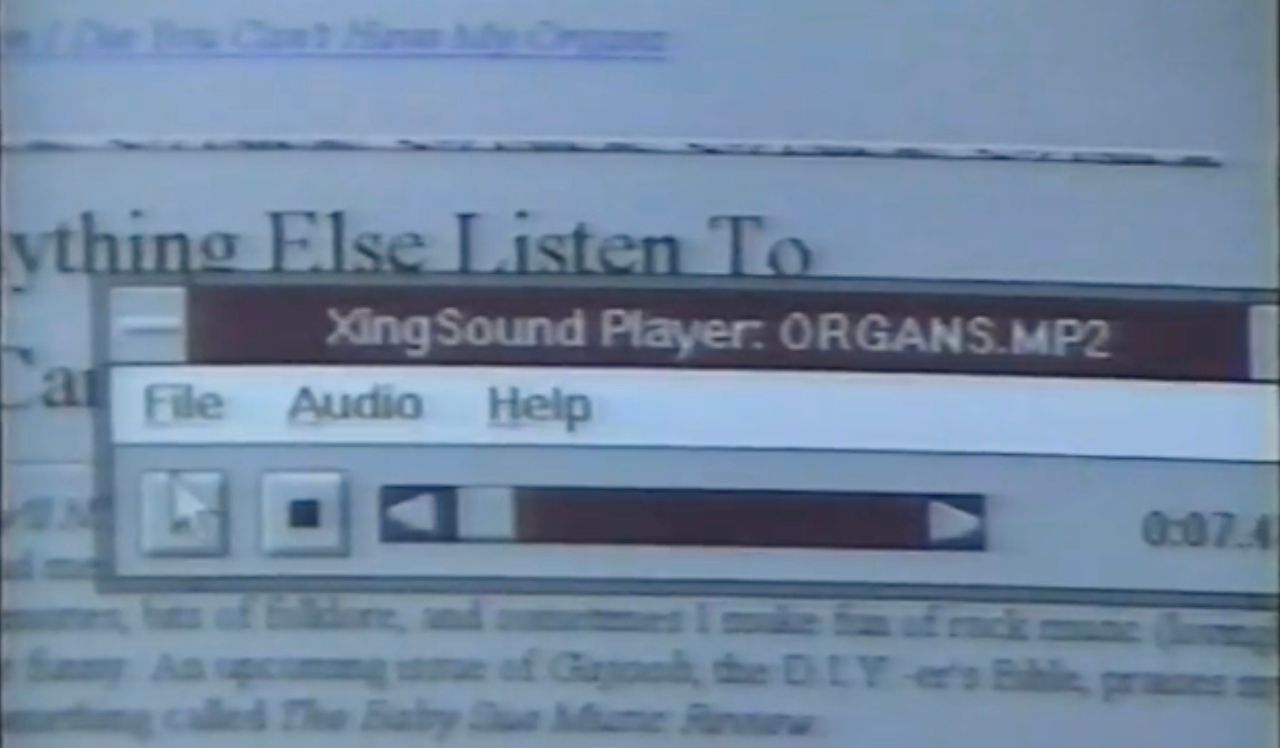
This process seems a long way off from the seamless streaming services we have today. But in 1994, listening to music on IUMA was time-consuming and also could take up a decent chunk of your monthly ISP bandwidth allocation — which was maybe around 100MB, depending on how much you paid.
No Business Model
From the musician or band’s perspective, there was another big issue in the Web of 1994: the lack of a business model. E-commerce sites like Amazon.com and eBay didn’t launch until the following year, and even then most people would be afraid to enter their credit card details into the WWW. It would take several more years after that before online transactions become common place.
With these and other limitations back in 1994, even with the existence of the pioneering IUMA, it was difficult to see how the Web could ever be used as a music distribution system.
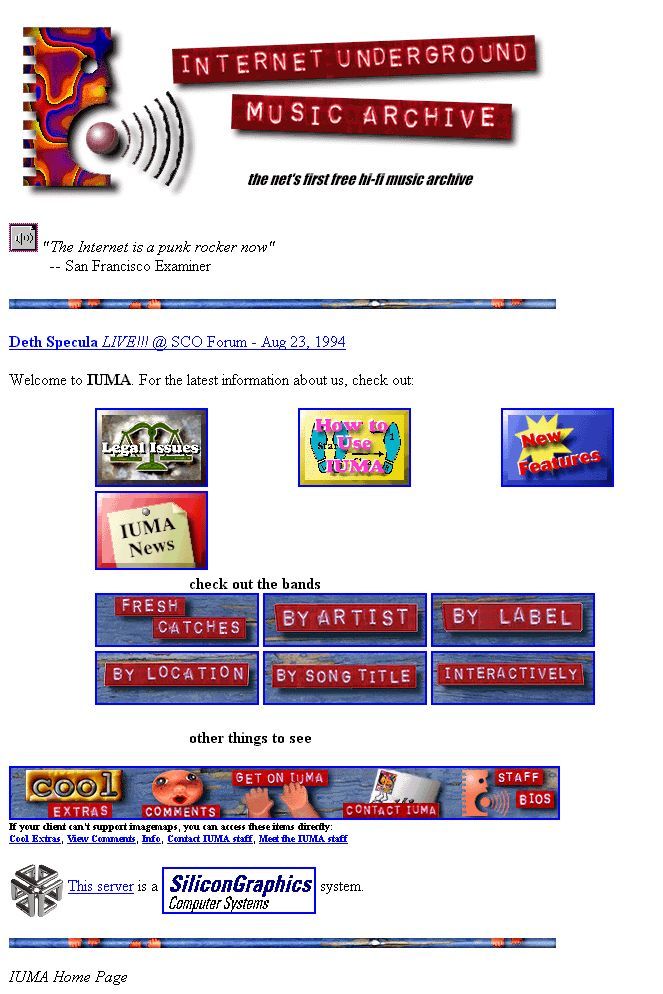
We must also remember that not many other websites existed at the time IUMA launched on the Web. In mid-1993, there were about 130 websites in the world and by mid-1994 there were 2,738 — including the launch of Yahoo’s directory. It wasn’t until the middle of 1995 that exponential growth began to kick in. By that point, there were 23,500 websites on the WWW. By mid-1996, there were 257,601 websites globally and within another year it had crossed the million mark. So it took more than three years after IUMA launched its website for the Web to really take off.
Why Choose the Web?
It’s also worth pausing to reflect on why a project like IUMA chose to migrate to the Web, rather than continue to focus on newsgroups and Gopher, or even choose an alternative network. Certainly there were other viable internet services to choose from at that time — notably CompuServe, Prodigy and America Online (AOL). But the trouble with those networks is that they were contained and insular. You could only visit a select number of information resources on the likes of AOL; they were “walled gardens,” to use a popular geek term of the time. Also, since bandwidth was so restrictive, they were mostly text-based. Chat and email were the two most popular applications (AOL became famous for its tagline, “You’ve got mail!”).
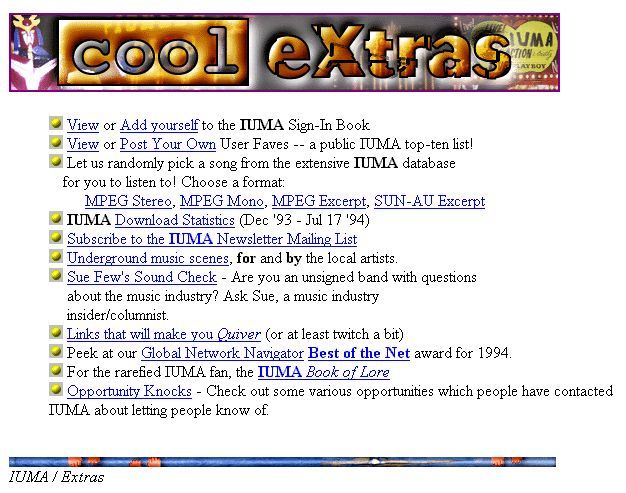
What made the Web a different beast was its potential to communicate and share information with anyone in the world. There were no borders on the WWW. In trying to explain this expansiveness to the public, the media relied on strained geographic and space metaphors like “information superhighway,” “global village” and “cyberspace.”
Also unlike AOL and its ilk, the Web soon became a medium where multimedia flourished — even despite the bandwidth limitations. That was primarily thanks to a company founded by Marc Andreessen and Jim Clark: Netscape. Images, video and music were all features enabled in — and encouraged by — the first truly popular web browser, Netscape Navigator, released in December 1994.
In next week’s post, we’ll look at what Netscape was like towards the end of 1994 — when a fully multimedia Web was finally within reach.
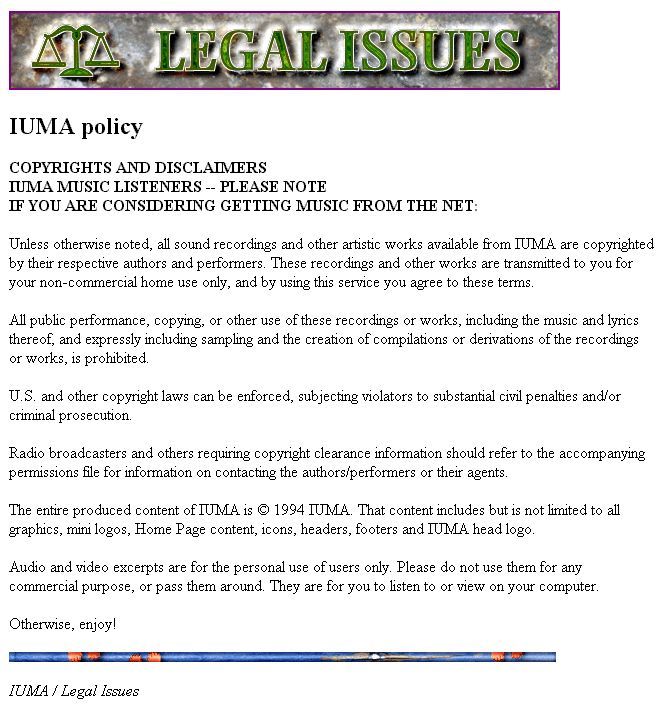
Footnote: the IUMA music collection of 44,000+ tracks is still available at the Internet Archive.
Update, 12 February 2025: After this post was published, I was given new screenshots of IUMA in 1994 by original team member David Beach, who contacted Jeff Patterson after he saw my post on Bluesky. Thanks also to Andy Baio, who alerted David to my post.
Buy the Book
My Web 2.0 memoir, Bubble Blog: From Outsider to Insider in Silicon Valley's Web 2.0 Revolution, is now available to purchase:
- Paperback, US$19.99: Amazon; Bookshop.org
- eBook, US$9.99: Amazon Kindle Store; Apple Books; Google Play
Or search for "Bubble Blog MacManus" on your local online bookstore.